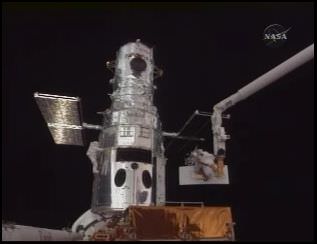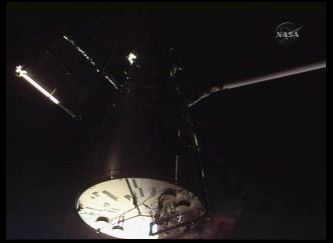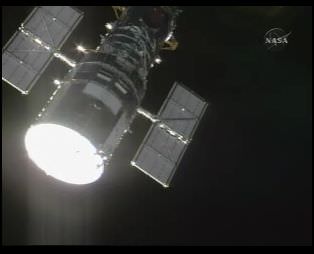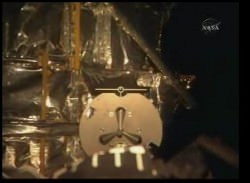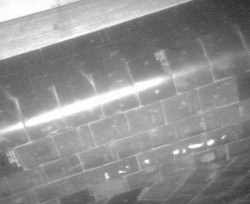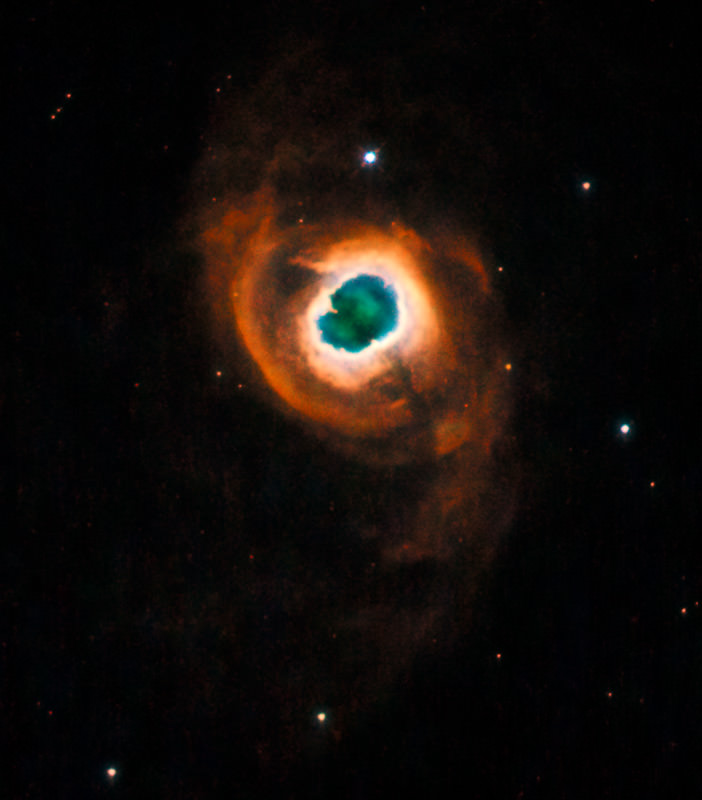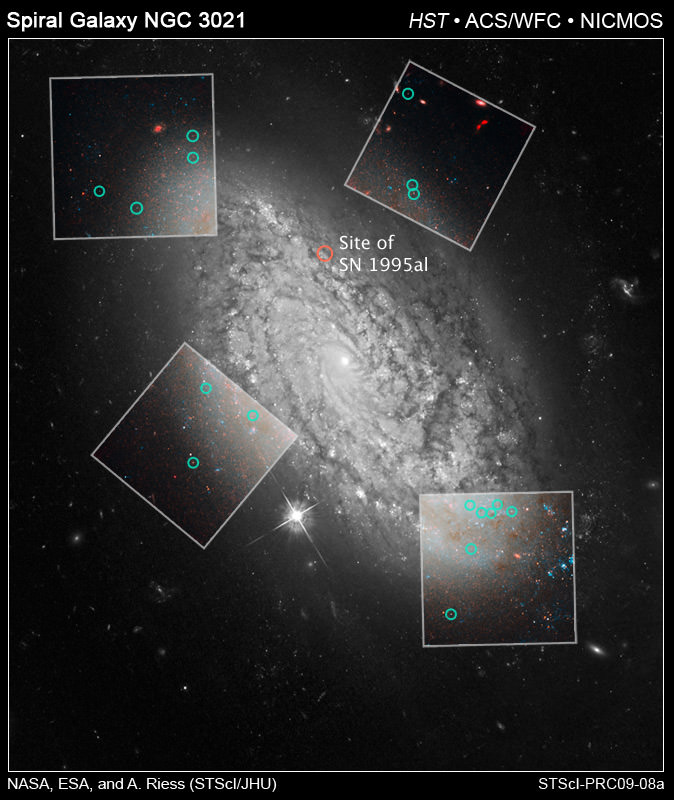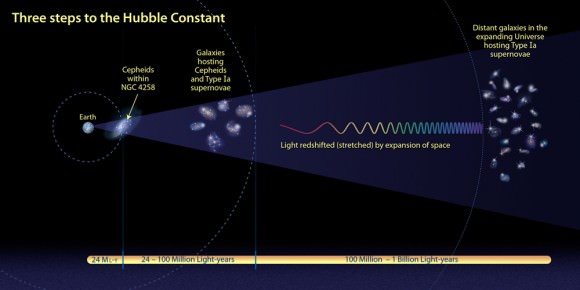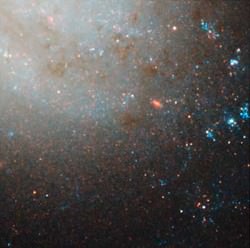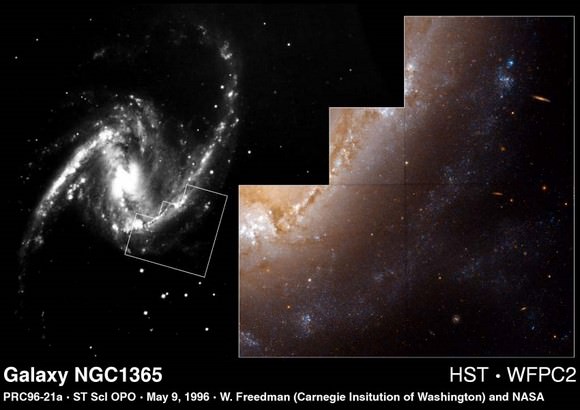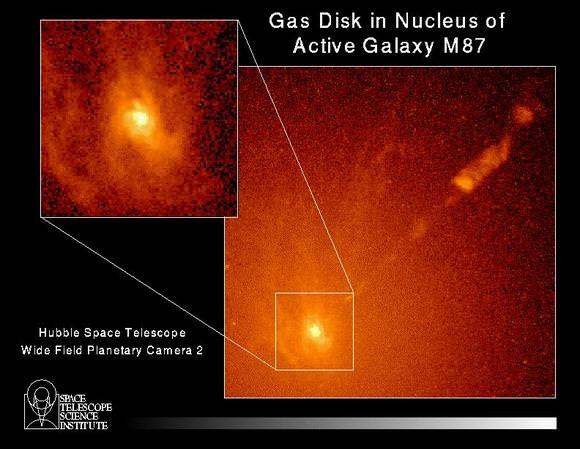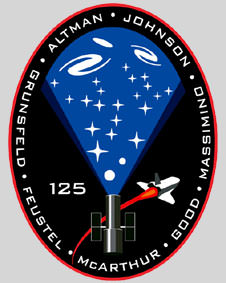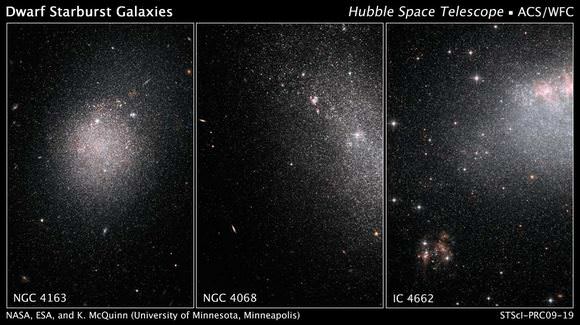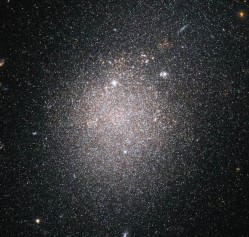[/caption]
While mission specialists John Grunsfeld and Drew Feustel successfully accomplished all their tasks for the first EVA of the Hubble servicing mission, it didn’t come without a little drama. A stubborn bolt threatened to thwart one of the spacewalk’s main goals, replacing the venerable space telescope’s workhorse optical camera with a new and improved instrument. But after a fair amount of old fashioned elbow grease, the Wide Field Planetary Camera 2 was able to be removed. The camera was originally installed in the first Hubble servicing mission in 1993, and was nicknamed “the camera that saved Hubble” because its special optics were able to overcome the spherical aberration in the telescope’s main mirror.
The astronauts also replaced Hubble’s data handling computer – the system that relays data to Earth which gave out last September, delaying this servicing mission, (scheduled to launch last October) until a replacement would be ready.
Watch HD video taken by the shuttle astronauts of Thursday’s activities.
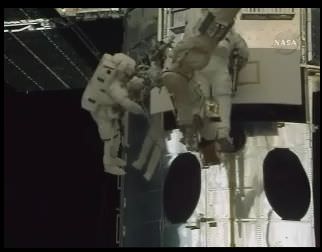
Strapped onto the shuttle’s robotic arm, Feustel struggled with a bolt on the old WFPC2 camera for more than an hour. “It’s been in there for 16 years — and it didn’t want to come out,” Grunsfeld said.
Feustel and Grunsfeld worried the bolt might snap, but Mission Control gave Feustel the go-ahead to disable the torque setting on his pistol grip tool.
“We understand if it breaks, then Wide Field (Planetary Camera 2) stays in,” Grunsfeld verified with Mission Control, before Feustel’s high stakes attempt.
“What John said is correct,” capcom Dan Burbank confirmed.
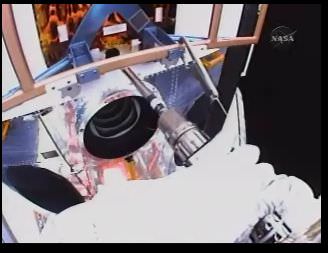
Feustel cranked with all his might, and finally it turned.
“I think I got it — It turned, it definitely turned. And it’s turning easily now. Woo hoo, it’s moving out” Feustel said jubilantly.
Once the bolt was freed, Feustel pulled out the old camera, which is about the size of a piano.
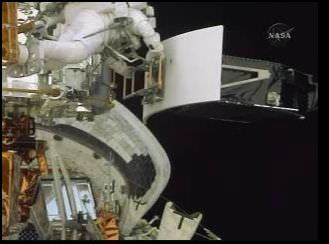
Installing the new $132 million WFPC3 was among the highest priorities for the mission, and will allow Hubble to capture images in infrared, ultraviolet and visible wavelengths of objects from as early as 500 million years after the birth of the universe.
Grunsfeld and Feustel also attached a docking mechanism on Hubble so a robotic spacecraft can attach itself to the telescope when its mission is over and maneuver it through a commanded descent through Earth’s atmosphere to its final resting place in the Pacific Ocean. They also lubricated some of Hubble’s doors and tried to install door mechanisms, which also gave them some trouble.
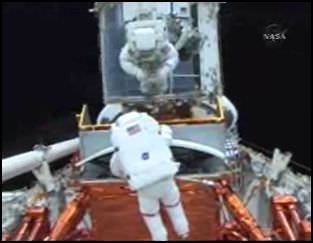
After installation of WFPC2 and the new data handling system, the Space Telescope Operations Center tested the connections and communications with the instruments, and was able to report to the crew on orbit that both systems passed initial “aliveness” tests.
The 11-day mission is NASA’s fifth and final repair mission to Hubble, with five consecutive spacewalks scheduled. This is NASA’s last chance to service the telescope the end of the shuttle program in 2010. NASA hopes the improvements will keep Hubble operational until at least 2014.
On Friday, two different spacewalkers will replace Hubble’s old and suspect gyroscopes and a set of aging batteries in order to extend the space telescope’s lifetime through at least 2014. Watch NASA TV online to see the EVA, or follow me on Twitter – I’ll be tweeting the highlights of the spacewalk.

